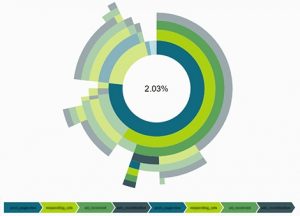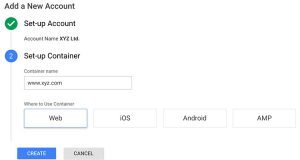
“We are a nation of Google and Facebook” – President Obama
Barack Obama’s 2008 candidacy revolutionized how political campaigns operate in the digital age. Obama was the first presidential candidate to effectively use social media as a core strategy for interacting with voters, not just to raise money, but to organize, support and expand grassroots movements from the ground-up. What made his approach so unique?
#1) He hired the right people.
In 2007, Obama hired a team of young, tech-savvy leaders on the media department to build the backbone of the campaign’s digital strategy. Among them were Kevin Malover, the founding CIO of Orbitz, and Chris Hughes, one of the co-founders of Facebook. His team worked on everything from podcasting, to social networking sites and mobile messaging. This was the first time that a media department played such a vital role within a campaign, having full ownership over everything that had to do with the internet.
#2) He used Big Data
Obama’s ability to collect and analyze large-scale data allowed him to anticipate behaviors and launch targeted messaging to specific groups of voters across the country. By 2008, he had collected such a sophisticated database that he could understand donor’s behaviors and predict the best channels and forms of content through which to target them. He could also mobilize groups of volunteers to increase his pool of voters, which was particularly useful in critical swing states. Prior to Obama, politicians were attracted to the power of the web, but beyond fundraising, no one understood how to use it to organize on a larger, national scale. Obama knew who his followers were and how they could be leveraged.
#3) He empowered people from the ground-up
Traditional campaigns focused on getting votes and money. Obama’s campaign went a step forward: it didn’t just create a Facebook page and YouTube account and expect immediate traction, it proactively asked voters to invest time, engage in, and get involved with an energetic movement that gave them a sense of purpose. Obama didn’t use social media as a platform to push out a message, he used it as a vehicle through which real people with real experiences could find an accessible way to show their support for change in real-time.
We just made history. All of this happened because you gave your time, talent and passion. All of this happened because of you. Thanks
— Barack Obama (@BarackObama) November 5, 2008
From 2008 to the 2016 election
You would think after Obama’s success that subsequent candidates would have continued to leverage social media to gain competitive advantage. In theory, social media today should be an even more powerful tool than it was when Obama launched his candidacy.
In practice, however, the 2016 political candidates are using social primarily as a way to push mass messaging; they haven’t harnessed social’s expanding potential to proactively join the millions of relevant conversations happening all around them. As peer-to-peer dialogue replaces mass-media distribution as the dominant paradigm of political discourse, the candidates who will most benefit are those who recognize that shift and are able to empower grassroots groups with the proper systems and tools, not just to organize, but to do so at scale.
This isn’t to say that candidates aren’t exploiting social media at all. Ted Cruz, for instance, implements “personality-based data modeling” and “machine learning” to target outreach and organize volunteers (Tech Republic)—a strategy that played a decisive role in the Iowa Caucus, his sole victory of the primary season to date. On the other side of the aisle, Hillary Clinton has also invested in a talented team dedicated to publishing original content on multiple channels. In the 2016 race, every candidate is using social in one way or another; success will be determined, as it was in 2008, by innovation—by who can adjust their strategy to reflect the myriad new ways voters engage with social today.
Politicians are like brands that can only exist with voters. And like brands, politicians need to account for every touch point along a voter’s journey. In today’s multi-platform digital landscape, it’s not enough to invest in expensive messaging or maintain a perfunctory presence on the various social channels. In order to win on social, candidates need to develop coherent strategies for building sincere, emotional, human connections with voters—then use innovation to scale them in a meaningful and effective way.
Digital & Social Articles on Business 2 Community(5)








